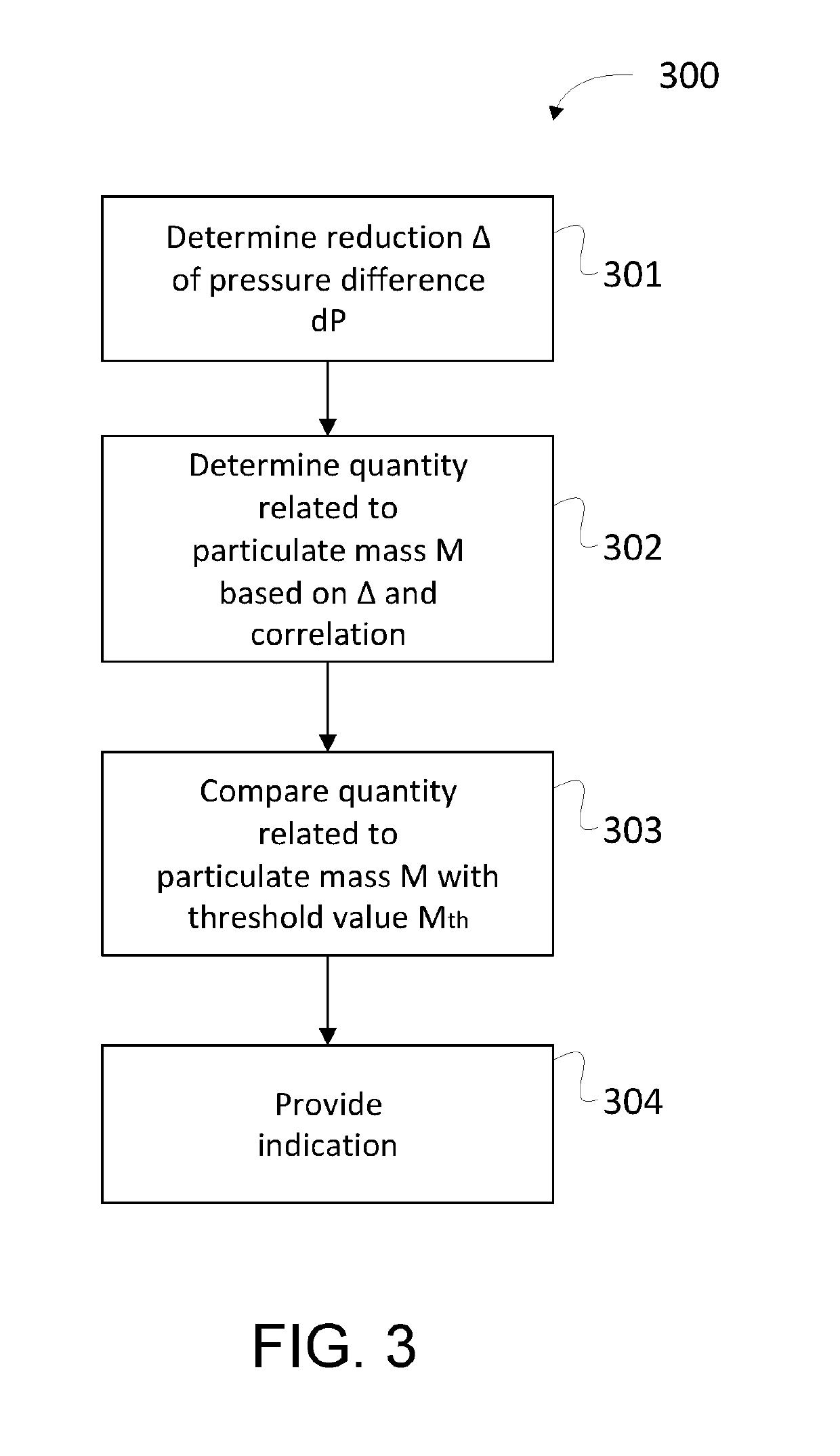Method and system for monitoring of a physical quantity related to a particulate mass in at least one exhaust pipe
a technology of at least one exhaust pipe and a physical quantity, applied in the direction of exhaust treatment electric control, machines/engines, mechanical equipment, etc., can solve the problems of low reliability, low cost, and uneven use of soot sensors in exhaust pipes, and achieve accurate and reliable monitoring of particulate mass m, cost effective and reliable
- Summary
- Abstract
- Description
- Claims
- Application Information
AI Technical Summary
Benefits of technology
Problems solved by technology
Method used
Image
Examples
Embodiment Construction
[0033]FIG. 1 schematically shows an example vehicle 100, comprising an exhaust treatment system 150, whereat the vehicle may comprise a system according to the present invention, which is described in more detail below. The vehicle has a powertrain comprising one combustion engine 101, which in a customary manner, via an output shaft 102 on the combustion engine 101, usually via a flywheel, is connected to an a gearbox 103 via a clutch 106. The vehicle's powertrain may also be of another type, such as of a type with a conventional automatic gearbox, of a type with a hybrid powertrain, of a type comprising more than one engine, etc.
[0034]An output shaft 107 from the gearbox 103 drives the wheels 110, 111 via a final drive 108, e.g. a customary differential, and the drive shafts 104, 105 connected to said final drive 108.
[0035]The vehicle 100 also comprises the above mentioned exhaust treatment system / exhaust purification system 150 for treatment / purification of exhaust emissions resu...
PUM
 Login to View More
Login to View More Abstract
Description
Claims
Application Information
 Login to View More
Login to View More - R&D
- Intellectual Property
- Life Sciences
- Materials
- Tech Scout
- Unparalleled Data Quality
- Higher Quality Content
- 60% Fewer Hallucinations
Browse by: Latest US Patents, China's latest patents, Technical Efficacy Thesaurus, Application Domain, Technology Topic, Popular Technical Reports.
© 2025 PatSnap. All rights reserved.Legal|Privacy policy|Modern Slavery Act Transparency Statement|Sitemap|About US| Contact US: help@patsnap.com



